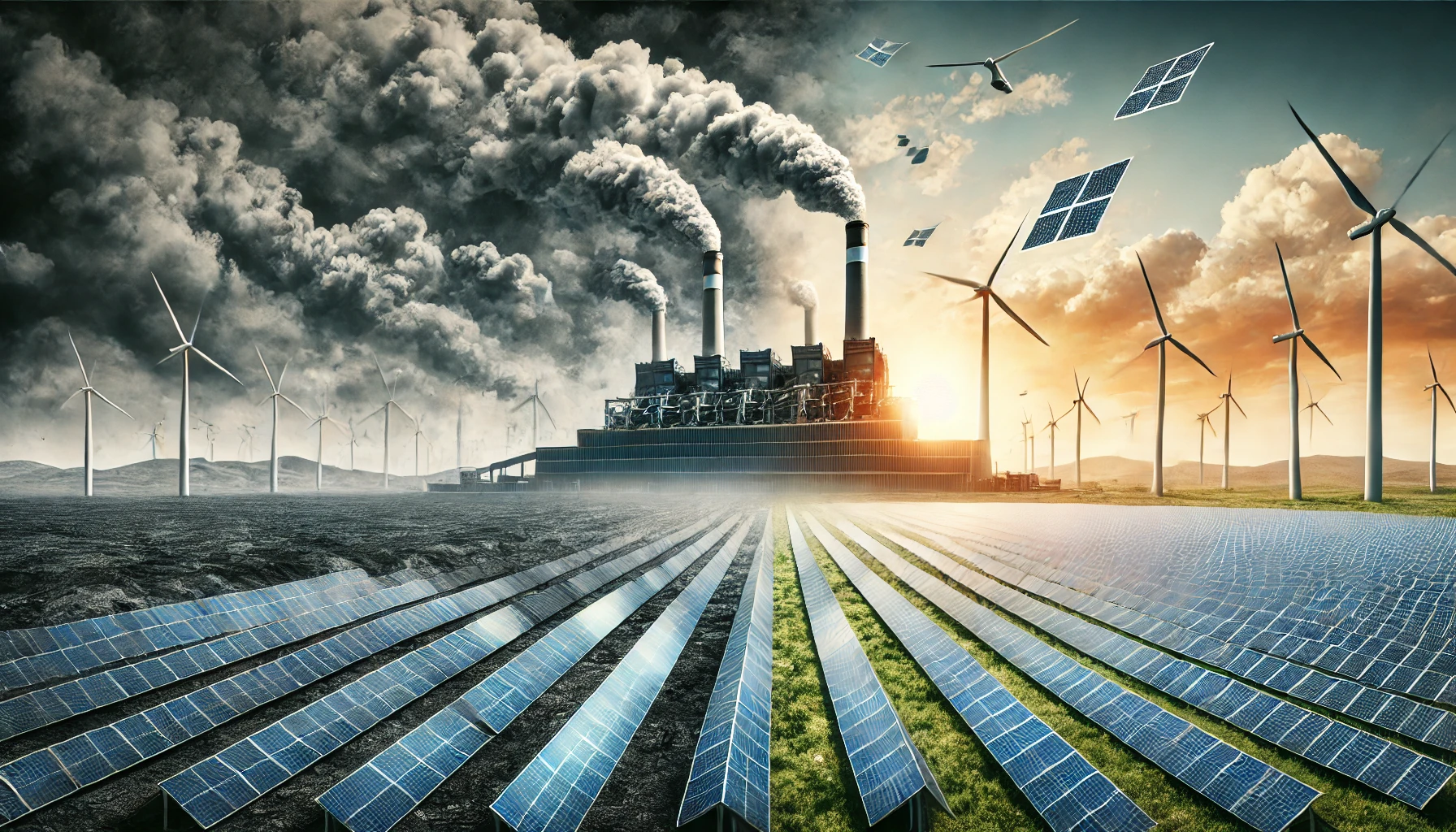The End of an Era: How the UK’s Last Coal Plant Shutdown Marks a Shift Toward Renewable Energy
The UK has reached a historic milestone in its journey towards a sustainable future with the shutdown of its last coal-fired power plant. This momentous event not only signals the end of coal power in the UK but also solidifies the nation’s commitment to renewable energy and carbon reduction goals. In this blog post, we’ll explore how the UK’s coal phase-out impacts the energy landscape, the role of clean energy alternatives, and how the nation is tackling net-zero targets by reducing carbon emissions.
Why Is the UK’s Last Coal Plant Shut Down?
The UK has long relied on coal to power its industries and homes. However, the past few decades have seen a sharp decline in coal’s share of the country’s energy mix. The UK last coal plant shut down on schedule, a year ahead of its initial 2025 deadline, as part of the government’s strategy to transition toward cleaner energy. This decision is closely linked to the UK’s net-zero targets, which aim to eliminate greenhouse gas emissions by 2050.
Coal power was once the backbone of the UK’s electricity generation, but in recent years, its contribution has diminished due to rising environmental concerns and the increasing affordability of clean energy alternatives UK. Coal plants, being among the most significant sources of carbon emissions, no longer align with the UK’s vision of a greener future.
The End of Coal in the UK: A Major Shift in Energy Policy
The closure of the last coal plant signifies more than just the end of coal-powered electricity generation—it marks a broader energy transition UK is undergoing. The coal power phase-out UK strategy has been driven by climate change concerns, commitments under international agreements like the Paris Agreement, and a national effort to embrace green energy UK.
The end of coal in the UK also highlights the nation’s resilience in adapting to changing energy landscapes. In 2012, coal accounted for over 40% of the UK’s electricity. By 2020, that figure had dropped to less than 2%, showing how quickly a shift toward renewable energy UK has taken place. This rapid decline in coal use is evidence of the success of the UK’s environmental policies and growing investments in clean energy alternatives.
Clean Energy Alternatives: Powering the Future Without Coal
So, with the coal plant closure UK, how is the UK keeping the lights on? The answer lies in renewable energy. The nation has invested heavily in a range of clean energy alternatives, including wind, solar, nuclear, and hydropower. These sources of energy are playing a pivotal role in helping the UK reduce its carbon emissions and meet its net-zero targets.
1. Wind Power
The UK is a global leader in offshore wind power, with wind farms providing a significant portion of the country’s electricity. Offshore wind capacity has expanded rapidly, and it is projected that wind will continue to be a cornerstone of the UK’s clean energy mix. According to government data, offshore wind farms could power every home in the UK by 2030.
2. Solar Energy
Though the UK isn’t known for its sunny climate, solar energy has become an increasingly important part of the renewable energy mix. Advances in solar panel technology have made it easier to capture and store solar energy, even in overcast conditions. Solar farms are springing up across the UK, further reducing the nation’s reliance on fossil fuels.
3. Nuclear Energy
While nuclear power has its controversies, it remains a reliable and carbon-free source of energy. The UK government plans to increase nuclear capacity as part of its broader energy strategy, recognizing that nuclear energy can play a crucial role in stabilizing the grid as more intermittent sources like wind and solar are integrated.
Achieving the UK’s Net-Zero Targets
The shutdown of the last coal plant plays a critical role in the UK’s pursuit of its net-zero targets. The government aims to reduce carbon emissions to net zero by 2050, which means balancing the amount of greenhouse gases emitted with the amount removed from the atmosphere. Eliminating coal, one of the dirtiest energy sources, is an essential step in this direction.
However, achieving net-zero targets will require more than just the closure of coal plants. The UK needs to continue expanding its investment in renewable energy UK while improving energy efficiency across industries and homes. Additionally, innovations such as carbon capture and storage (CCS) technologies will be vital in reducing emissions from sectors that are harder to decarbonize, such as manufacturing and aviation.
The Economic Impact of the Coal Phase-Out
While the coal power phase-out UK is a positive step for the environment, it does raise questions about its economic impact. The coal industry has been in decline for decades, but the closure of the final coal plant will still affect jobs in certain communities. To mitigate these effects, the UK government has pledged to support workers affected by the transition and invest in retraining programs for jobs in the renewable energy sector.
On the positive side, the green energy UK transition has already created thousands of new jobs in industries like wind and solar energy. These jobs are not only environmentally sustainable but also provide a long-term solution for the country’s energy needs, reducing reliance on imported fossil fuels.
The Future of Energy in the UK
With the end of coal in the UK, the country is looking to a future powered by renewable energy and innovation. The energy transition UK will continue to evolve, with the UK aiming to be a global leader in green energy solutions. Innovations like energy storage, electric vehicles, and smart grids will all play crucial roles in shaping the future of the UK’s energy landscape.
The closure of the last coal plant serves as a powerful symbol of the UK’s commitment to tackling climate change. While there are still challenges ahead, the momentum is clear—the UK is on the path toward a clean energy future, and the success of its renewable energy transition will be watched closely by other nations around the world.
A Bright, Clean Future for the UK
The closure of the UK’s last coal plant is a monumental step in the nation’s ongoing energy transition. By embracing clean energy alternatives and working toward ambitious net-zero targets, the UK is showing the world that it’s possible to move away from fossil fuels without sacrificing economic growth or energy security. The end of coal in the UK is not the end of the story—it’s the beginning of a cleaner, greener chapter for the nation.
As the UK continues to innovate and lead in the green energy sector, other countries may look to replicate its success. From cutting carbon emissions to creating new jobs in the renewable energy industry, the benefits of the coal power phase-out are already becoming clear. For more educational insights on how sustainable energy impacts future generations, be sure to visit Regent Studies.




